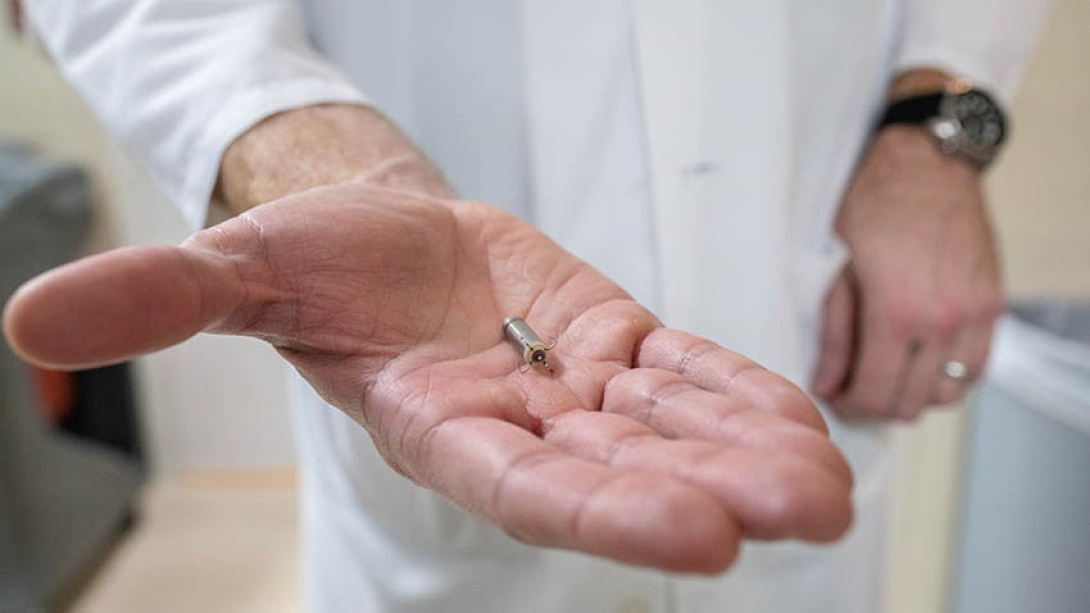Revolutionizing Cardiac Care with Miniature Technology
In a groundbreaking medical development, scientists have unveiled the world’s tiniest pacemaker—a revolutionary device smaller than a grain of rice.
This wireless, bioresorbable pacemaker, which can be injected and controlled by light, represents a major advancement in the field of cardiology.
Researchers believe this innovation will enhance temporary cardiac treatments and eliminate the need for invasive procedures.
The device, developed by a team of U.S.-led researchers, is still in the experimental stage and years away from human trials. However, its potential impact on heart surgery recovery, particularly for infants born with congenital heart defects, has been described as transformative.
A Life-Saving Breakthrough for Temporary Cardiac Support
Millions of people worldwide rely on pacemakers to regulate their heartbeats, preventing life-threatening irregularities. While permanent pacemakers have been a standard solution, temporary pacemakers are also widely used for patients recovering from heart surgery.
The challenge with current temporary pacemakers lies in their reliance on surgical implantation, which involves wires connecting the device to the heart muscles. These wires must later be removed, a procedure that carries risks, including internal bleeding and tissue damage.
The newly developed pacemaker seeks to eliminate these risks. At just one millimeter thick and 3.5 millimeters long, the device is tiny enough to fit inside the tip of a syringe, making implantation significantly less invasive.
Furthermore, because it is completely wireless and dissolves naturally in the body, it removes the need for extraction procedures, reducing complications associated with conventional pacemakers.
How It Works: The Science Behind the Device
Unlike traditional pacemakers, this miniature device does not rely on wires or external power sources. Instead, it uses a galvanic cell powered by the body’s fluids, converting chemical energy into electrical pulses that regulate heartbeats.
The pacemaker is paired with a soft patch worn on the patient’s chest. This patch monitors heart activity and, when it detects an irregular heartbeat, emits light signals that guide the pacemaker’s function.
This technology, known as optogenetics, enables precise control over the heart’s rhythm and ensures that the device only activates when necessary.
Potential Benefits for Pediatric and Adult Cardiac Patients
One of the primary motivations for developing this device was to provide a safer and more efficient solution for infants born with congenital heart defects. Currently, around 1% of newborns require a pacemaker after surgery, but the process of implanting and later removing traditional temporary pacemakers can be dangerous for these tiny patients.
The new dissolvable pacemaker offers a less invasive alternative that could improve outcomes and recovery times.
Adults recovering from heart surgery could also benefit from this technology. Patients often require temporary pacing support after surgical procedures, and the new device could provide a seamless and complication-free transition back to normal heart function.
From Lab to Human Trials: What Comes Next?
While the pacemaker has shown promising results in animal trials, including tests on mice, rats, pigs, and human heart tissue in laboratory settings, further studies are required before it can be tested on humans.
According to lead researcher John Rogers of Northwestern University, human trials could begin within the next two to three years.
To accelerate its development, Rogers’ laboratory has launched a start-up aimed at refining the device and securing regulatory approvals. If successful, this innovation could redefine the way temporary cardiac conditions are treated worldwide.
A Step Toward Future Medical Advancements
Beyond cardiac care, researchers believe that the core technology behind this pacemaker—wireless, bioresorbable electronics controlled by light—could have far-reaching applications in other areas of medicine.
The ability to create tiny, temporary devices that dissolve once their job is complete could lead to advancements in neural stimulation, pain management, and post-surgical recovery.
Bozhi Tian, a University of Chicago scientist who has worked on light-activated pacemakers but was not involved in this particular research, described the device as a “significant leap forward” in medical technology.
A Hopeful Future for Cardiac Patients
With cardiovascular disease remaining the leading cause of death worldwide, innovations like the world’s smallest pacemaker offer hope for safer and more effective treatments.
As researchers continue refining the technology, this tiny yet powerful device could revolutionize cardiac care, making temporary pacemaker treatments more accessible and reducing the risks associated with traditional procedures.
As human trials approach, the world eagerly awaits the potential benefits this breakthrough could bring, paving the way for a new era in heart treatment and beyond.

